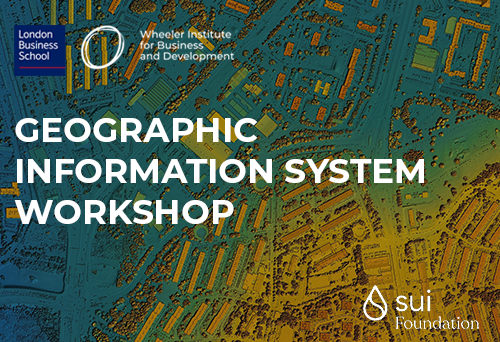Wheeler Institute Research Portal
Business research for impact
In the spotlight
Latest publications
Evidence from the first Shared Medical Appointments (SMAs) randomised controlled trial in India: SMAs increase the satisfaction, knowledge, and medication compliance of patients with glaucoma
Abstract
In Shared Medical Appointments (SMAs), patients with similar conditions meet the physician together and each receives one-on-one attention. SMAs can improve outcomes and physician productivity. Yet privacy concerns have stymied adoption. In physician-deprived nations, patients’ utility from improved access may outweigh their disutility from loss of privacy. Ours is to our knowledge the first SMA trial for any disease, in India, where doctors are scarce. In a 1,000-patient, single-site, randomized controlled trial at Aravind Eye Hospital, Pondicherry, we compared SMAs and one-on-one appointments, over four successive visits, for patients with glaucoma. We examined patients’ satisfaction, knowledge, intention-to-follow-up, follow-up rates, and medication compliance rates (primary outcomes) using intention-to-treat analysis. Of 1,034 patients invited between July 12, 2016 –July 19, 2018, 1,000 (96.7%) consented to participate, and were randomly assigned to either SMAs (NSMA = 500) or one-on-one appointments (N1-1 = 500). Patients who received SMAs showed higher satisfaction (MeanSMA = 4.955 (SD 0.241), Mean1-1 = 4.920 (SD 0.326); difference in means 0.035; 95% CI, 0.017–0.054, p = 0.0002) and knowledge (MeanSMA = 3.416 (SD 1.340), Mean1-1 = 3.267 (SD 1.492); difference in means 0.149; 95% CI, 0.057–0.241, p = 0.002) than patients who received one-on-one appointments. Across conditions, there was no difference in patients’ intention-to-follow-up (MeanSMA = 4.989 (SD 0.118), Mean1-1 = 4.986 (SD 0.149); difference in means 0.003; 95% CI, -0.006–0.012, p = 0.481) and actual follow-up rates (MeanSMA = 87.5% (SD 0.372), Mean1-1 = 88.7% (SD 0.338); difference in means -0.012; 95% CI, -0.039–0.015, p = 0.377). Patients who received SMAs exhibited higher medication compliance rates (MeanSMA = 97.0% (SD 0.180), Mean1-1 = 94.9% (SD 0.238); difference in means 0.020; 95% CI, 0.004–0.036, p = 0.013). SMAs improved satisfaction, learning, and medication compliance, without compromising follow-up rates or measured clinical outcomes. Peer interruptions were negatively correlated with patient satisfaction in early-trial SMAs and positively correlated with patient satisfaction in later-trial SMAs.
When Bulldozers Loom: Informal Property Rights and Marketing Practice Innovation Among Emerging Market Microentrepreneurs
Abstract
Microentrepreneurs represent the most common type of business in the world, and marketing is a primary means by which they earn their livelihoods. They are especially numerous in emerging markets, and many live precarious lives characterized by poverty and potentially devastating exogenous shocks. This paper examines the marketing practices of microentrepreneurs by studying grocery retailers in a large slum in Cairo, Egypt. Employing detailed data on the marketing practices of these retailers, the paper examines why some microentrepreneurs engage in innovation in their marketing practices (and perform better), whereas others fail to do so. We highlight the causal effect of an important, but rarely studied, factor—informal property rights—on innovation in marketing practices among microentrepreneurs. Because few microentrepreneurs in the context we study have access to formal property rights, the threat of expropriation looms large in their lives. We show that those microentrepreneurs who possess their stores (without actually owning them) are substantially less likely to innovate in their marketing practices than those who lease their stores. We make use of an exogenous shock to property-rights laws to assess the causal impact of informal property rights on innovation in marketing practices.
Religion and educational mobility in Africa
Abstract
The African people and leaders1,2 have long seen education as a driving force of development and liberation, a view shared by international institutions3,4, as schooling has large economic and non-economic returns, particularly in low-income settings5. In this study, we examine the educational progress across faiths throughout postcolonial Africa, home to some of the world’s largest Christian and Muslim communities. We construct comprehensive religion-specific measures of intergenerational mobility in education using census data from 2,286 districts in 21 countries and document the following. First, Christians have better mobility outcomes than Traditionalists and Muslims. Second, differences in intergenerational mobility between Christians and Muslims persist among those residing in the same district, in households with comparable economic and family backgrounds. Third, although Muslims benefit as much as Christians when they move early in life to high-mobility regions, they are less likely to do so. Their low internal mobility accentuates the educational deficit, as Muslims reside on average in areas that are less urbanized and more remote with limited infrastructure. Fourth, the Christian–Muslim gap is most prominent in areas with large Muslim communities, where the latter also register the lowest emigration rates. As African governments and international organizations invest heavily in educational programmes, our findings highlight the need to understand better the private and social returns to schooling across faiths in religiously segregated communities and to carefully think about religious inequalities in the take-up of educational policies.
The Diffusion of Disruptive Technologies
Abstract
We identify novel technologies using textual analysis of patents, job postings, and earnings calls. Our approach enables us to identify and document the diffusion of 29 disruptive technologies across firms and labor markets in the U.S. Five stylized facts emerge from our data. First, the locations where technologies are developed that later disrupt businesses are geographically highly concentrated, even more so than overall patenting. Second, as the technologies mature and the number of new jobs related to them grows, they gradually spread geographically. While initial hiring is concentrated in high-skilled jobs, over time the mean skill level in new positions associated with the technologies declines, broadening the types of jobs that adopt a given technology. At the same time, the geographic diffusion of low-skilled positions is significantly faster than higher-skilled ones, so that the locations where initial discoveries were made retain their leading positions among high-paying positions for decades. Finally, these pioneer locations are more likely to arise in areas with universities and high skilled labor pools.
The Unequal Economic Consequences of Carbon Pricing
Abstract
This paper studies the economic impacts of carbon pricing. Exploiting institutional features of the European carbon market and high-frequency data, I document that a tighter carbon pricing regime leads to higher energy prices, lower emissions and more green innovation. This comes at the cost of a fall in economic activity, which is borne unequally across society: poorer households lower their consumption significantly while richer households are less affected. The poor are more exposed because of their higher energy share and, importantly, also experience a larger fall in income. Targeted fiscal policy can help alleviate these costs while maintaining emission reductions.










